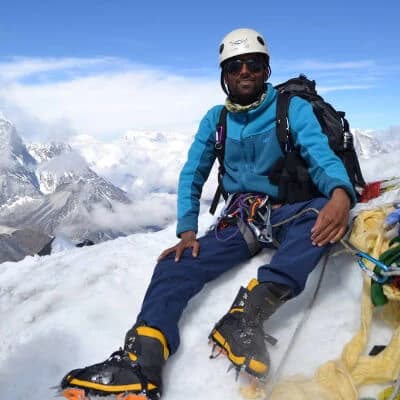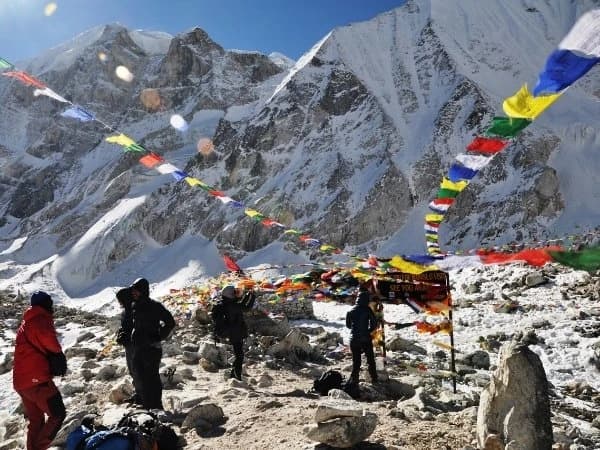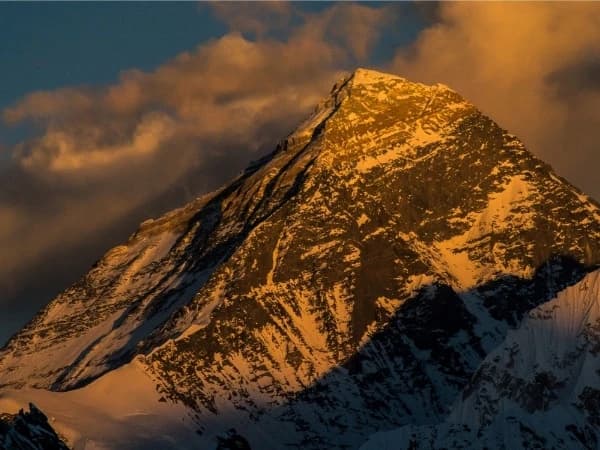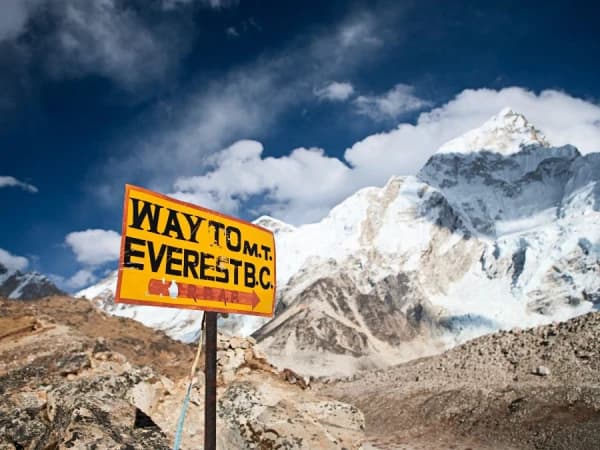What is Rainbow Valley Everest?
Everest Rainbow Valley is a term used by mountaineers to describe a specific section on the northeast ridge of Mount Everest, which is just below the summit. Despite its poetic name, the area is known for something far more somber than beauty; it is where many climbers who lost their lives during their descent now rest. Often in the same bright gear they wore on their final push to the top.
The name doesn't refer to geological valleys or colorful terrain but rather to the vivid mountaineering suits that dot the slope. Over the years, numerous climbers have perished in the snow due to high altitude sickness, falls, or simply running out of time and oxygen. In such a hostile environment, retrieval is nearly impossible. The combination of freezing temperatures, low oxygen and technical difficulty forces climbers to leave the fallen behind.
These bodies remain frozen in time and their brightly colored clothing remains eerily intact. From afar, these colors stand out starkly against the white snow and grey rock, which create the visual impression of a rainbow-streaked slope. Hence, this is a haunting nickname, ‘The Rainbow Valley Everest’. Unlike other high mountains, where nature reclaimed the deceased over time. Everest's freezing temperature preserves everything like clothing, equipment and even the expression.
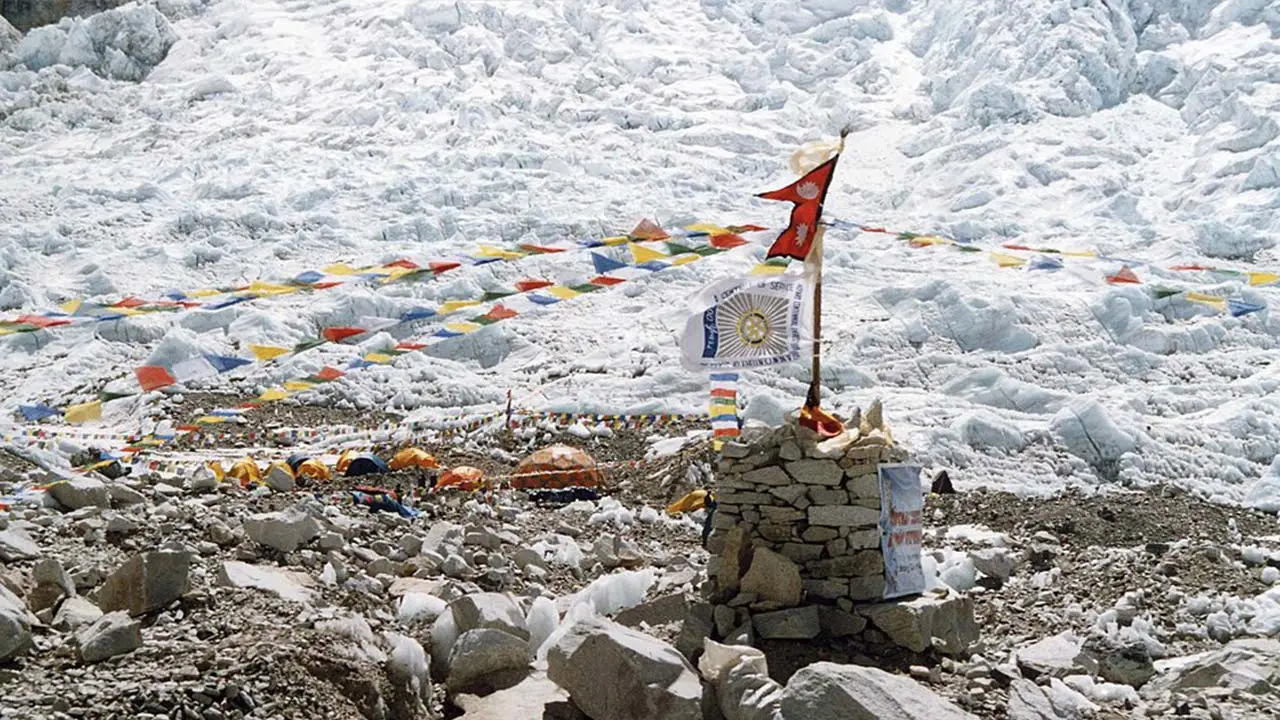
This section of the mountain has become more than just a resting place, which is a symbol of the risks climbers accept and the thin margin between victory and catastrophe. To those ascending toward the summit while passing through Everest Rainbow Valley is both a visual shock and a moment of reflection of a confrontation with mortality at 8,000 Meters.
To understand this high-altitude alpine section is to grasp the raw truth of Everest: that beauty and danger, glory and loss and often share the same narrow path to the top of the world.
Where is Rainbow Valley on Everest?
Rainbow Valley is located on the northeast ridge of Mount Everest, which is just below the summit with an altitude of roughly 8,000 to 8,500 meters. This zone lies within what climbers refer to as the “Death Zone”. It is a region where the oxygen level is so low that the human body begins to deteriorate rapidly. The death zone is the final stretch before reaching the top and is one of the most dangerous parts of the entire ascent.
The Mt Everest Rainbow Valley section lies near the route taken by climbers approaching from the Tibet (North) side. The effects of altitude and exposure are equally lethal on all sides of the mountain. Climbers make their final summit push along these narrow ridges and they pass through Rainbow Valley, where many who perished on previous attempts still remain.
This terrain is steep, icy and unpredictable. Weather conditions change rapidly and visibility can drop to near zero. The combination of physical exhaustion, limited oxygen and intense cold makes every rescue operation extremely dangerous and often impossible. That is why many of the bodies in Everest’s Rainbow Valley have never been recovered. They are simply too high, too frozen and hazardous to retrieve.
Despite the name, the area is not a typical Valley; instead, it is more of a sloped section of Everest's upper flank where fallen climbers now rest and just some meters away from where others achieve their lifelong dreams of reaching the summit.
For those ascending Everest, passing through this place is a sobering moment that marks not just the proximity to the goal but a reminder of the risks that lie ahead. The ultimate cost paid by many who came before them.
The Origin of the Name ‘Everest Rainbow Valley’
“Rainbow Valley,” the term emerged from within the climbing community, which was not coined by scientists or cartographers but actually by those who witnessed its surreal and sorrowful landscape firsthand. Over time, when more climbers encountered the slope scattered with vividly colored down suits, the nickname began to circulate informally in mountaineering accounts and expedition stories.
Unlike many named features on Everest, Rainbow Valley wasn't identified on maps or official climbing charts. It earned its name through the observation of a poetic label masking a harsh reality. Bright reds, yellows, blues and greens seen along the route were not formed by the geological formation or natural phenomenon. Buit was formed by the preserved suits of fallen climbers who froze in the snow.
Due to the rise of storytelling, documentaries and social media, the team gained widespread attention. The images and videos captured during expeditions brought a global awareness for the haunting visual contrast of bright colors against stark ice and stone, which was once only known among elite climbers. And, it slowly became a symbol recognized even by those far from the mountaineering world.
The name “ Mt Everest Rainbow Valley” evokes a mixture of awe and sorrow and for some, it softens the brutal truth of what that area represents. For others, it sharpens the emotional weight, which adds a layer of human tragedy to an already perilous environment. Though unofficial, the name has now become a part of Everest's legacy. It is a place where beauty and grief coexist, which is a frozen gallery of dreams that never made it home.
The Death Zone and the Human Cost
To understand The Rainbow Valley, one must first understand the harsh reality of the Death Zone. It is the area above 8,000 meters (26,247 feet) on Mount Everest. At this altitude, oxygen levels drop to just one-third of what they are at sea level, making even the simplest task physically exhausting and mentally draining. The human body cannot adapt to such conditions permanently. Time spent in this zone becomes a countdown against life itself.
Climbers in the Death Zone have to experience extreme physiological stress, which makes muscles weaken rapidly, coordination falters and decision making becomes impaired. The breathing becomes labored even while resting. Many people suffer from hypoxia. It is a condition where the brain is starved of oxygen, which leads to confusion, hallucinations and in some cases unconsciousness. Added to this the biting cold, hurricane-force winds and the constant threat of avalanches make it clear to understand why so many perish within this altitude band.
It is in this unforgiving stretch that Rainbow Valley exists in and the human cost of reaching the summit is more visible here. Many climbers collapse on their descent, too weak or ill to move, often just a few hundred meters from safety. And, in such an environment, rescue efforts are nearly impossible. Carrying a body of let alone a living person, requires immense strength, coordination and additional oxygen and all of this is in critically short supply.
For the climbers, the experience of passing by those who remain in the Death Zone is emotionally wrenching. They walk among dreams frozen in place as a reminder of the razor-thin margin between survival and tragedy.
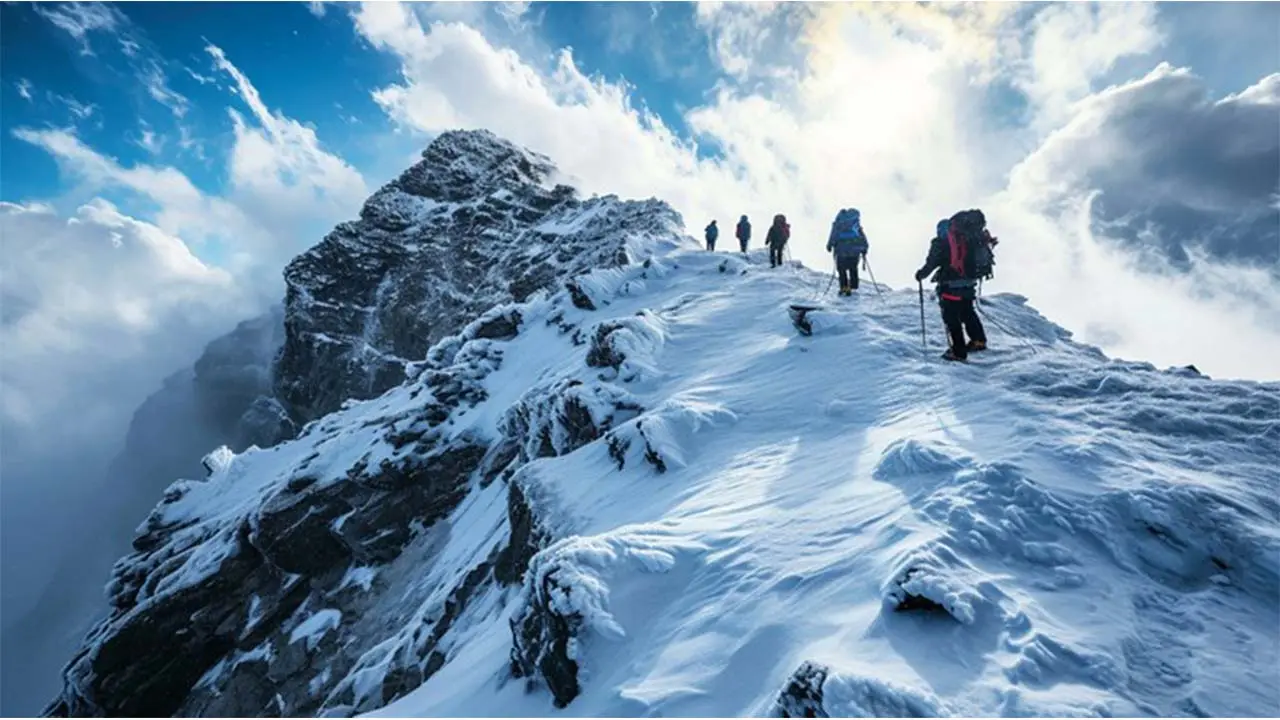
The Rainbow Valley is not only a physical location, it is the embodiment of the human toll Everest demands and every colorful silhouette in the snow reflects a silent story of courage,risk and ultimate sacrifice. It is where ambition and mortality collide in the highest place on Earth.
Famous Cases Associated With Rainbow Valley
Over the decades, the several tragic stories have contributed to the eerie legend of the Rainbow Valley and these individuals which once is driven by dreams of summiting the world's highest peak, now rest permanently along Everest's upper slopes and their stories remains etched into mountaineering history as their presence in Rainbow Valley which has helped shape its haunting reputation.
Francy's Arsentiev - “Sleeping Beauty of Everest”
In 1998, Francys Arsentiev became the first American woman to reach Everest's summit without supplemental oxygen and on her descent. She was separated from her husband, Sergei. Later, other climbers found her alive but barely responsive and unable to move or speak. Despite their efforts, rescuing her was impossible in the Death Zone and Francys passed away on the mountain. Here brightly colored suit was visible for years among the trail and her peaceful, seated posture earned her the nickname “ Sleeping Beauty,”. She became one of Everest Rainbow Valley’s most well-known figures.
Green Boots
One of the most recognizable, controversial figures on Everest is an unidentified climber known as Green Boots. Believed to be Tsewang Paljor, an Indian climber who died in 1996, his body became a grim landmark inside a small limestone cave near the northeast ridge. For years passing climbers took rest beside his motionless body, which was easily identified by the fluorescent green mountaineering boots he wore. The nickname and his legacy remain inseparable from Rainbow Valley's story.
David Sharp
In 2006, British climber David Sharp died while attempting a solo ascent. He was still alive when several teams found him. But, due to his condition and the extreme altitude, none could bring him down. His death sparked intense debate within the mountaineering community about the ethics of rescue and the moral responsibilities of fellow climbers. His body was initially visible in the same cave as Green Boots, adding further attention to that grim section of the mountain.
Each of these individuals contributed unwillingly to the legacy of The Rainbow Valley Everest and their stories reflect not only personal ambition but also the brutal conditions that define Everest's upper reaches.
Ethical Dilemma and Climber's Responsibility
The most troubling aspect of the Rainbow Valley is not the presence of fallen climbers but the actual fact that many of them were seen alive in their final moments. This stark reality forces a difficult question: don’t climbers have responsibilities to help others in the Death Zone? The answers are far from simple.
At altitudes above 8,000 metres, survival becomes personal. Every breath, every step and every decision is a battle against time and biology. Carrying an additional load or attempting a rescue can mean risking one's own life. Even if a fellow climber is only a few meters away and the energy and oxygen needed to assist them may exceed what another climber has left.
These realities have created intense ethical debate within the mountaineering community and is it acceptable to prioritize your summit over someone else's life? Should solo or unsupported climbs be discouraged on high-risk mountains like Everest? Can better regulations, training, or support reduce heartbreaking scenarios?
While some of them defend their actions, saying they had no realistic option to help while others feel the emotional weight of walking past someone in distress for the rest of their lives. The death of David Sharp in particular drew sharp criticism when it was revealed that over 30 climbers passed him on their way to the summit without offering assistance.
Rainbow Valley is not just a geographical location, but in fact it is a moral one and sits at the intersection of human ambition, physical limitations and the complex ethics of survival at high altitude.
Symbolism of the Rainbow Valley
Everest Rainbow Valley is more than tragic landmarks and it has become a powerful symbol within the mountaineering world. To the climbers, it represents the dual nature of Everest: the promise of glory and the ever-present threat of loss. The vibrant color that gives the area its name now speaks volumes about the dreams, sacrifices and silence that echo above 8,000 meters.
For many, Mt Everest Rainbow Valley stands as a grim tribute to the pursuit of human ambition and reflects the cost of pushing beyond limits as one of the most extreme environments on earth. Each bright outline in the snow is a visual story of someone who dared to challenge Everest but never returned home.
At the same time, the valley haunting imaginary forces a confrontation with mortality and climbers who pass through are often struck by the wave of sobering emotion. The rainbow-like spread of colors is a cruel irony in a place where vibrancy means tragedy.
In documentaries, literature and summit accounts, The Rainbow Valley is often portrayed as a spiritual threshold for those who pass it on their way up, carrying with them the memory of those who never came down and it becomes not just a physical checkpoint but a deeply personal and emotional moment on the mountain.
Rainbow Valley's symbolism is layered: it warns, it honors and it reminds. In a place where life is measured in breaths and the valley reflects the quiet legacy of those who chased their highest dreams and paid the highest price.
Efforts for Recovery and Respect
While Everest Rainbow Valley is a stark reminder of Everest's dangers, it has also inspired ongoing efforts to treat the mountain's fallen with dignity. Over the years, climbers, families and local authorities have initiated missions to move or respectfully cover visible bodies, especially those located near well-traveled routes.
One notable effort was “ The Tao of Everest” in 2007, led by climber Ian Woodall. He and his team returned to the mountain to cover the body of Francys Arsentiev and move her out of direct view. It was not just an act of comparison but a symbolic gesture of closure for her family and the climbing community.
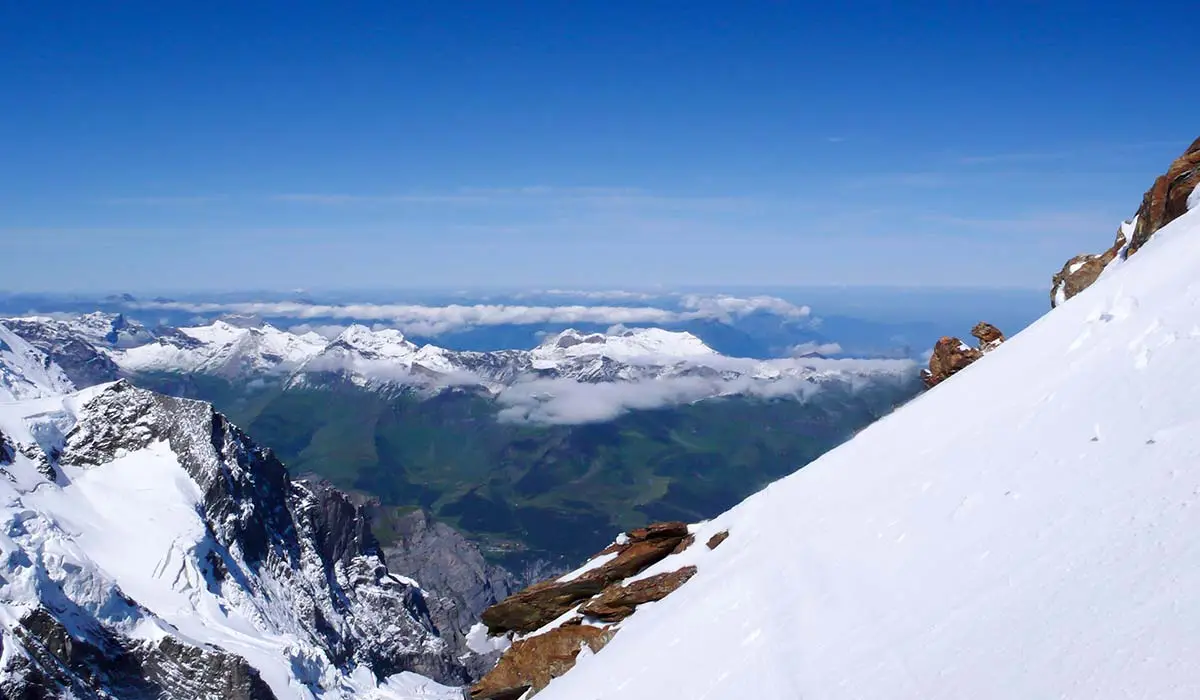
Most recently, Nepalese and Chinese officials have discussed coordinated clean-up operations, including body retrieval and removal of litter in high altitude zones. However, removing bodies from above 8,000 meters remains a dangerous and costly operation. Each rescue or recovery can require a team of Sherpas, supplemental oxygen, specialized gear and immense physical effort while putting more lives at risk.
Because of this, many climbers chose to let the deceased remain on the mountain, viewing Everest itself as their final resting place. Instead, memorials are built at base camp or along trails marked with prayer flags, stone, or plaque and these gestures reflect a growing awareness and respect for those lost on Everest.
The Rainbow Valley Everest may remain a permanent fixture, but it remains as efforts to honor the individual within it are evolving and replacing silence with remembrance and tragedy with quiet tribute.
Conclusion
Everest Rainbow Valley is a name that echoes beyond the slopes of Everest, which speaks of ambition, tragedy and the sobering truth that not every climber returns. Beneath the summit lies the haunting section of mountain where colourful reminders of past climbers remain frozen and each one tells a story of determination, risk and the fine line between triumph and loss.
To those who ascend Everest, passing through this area is more than a physical challenge and it's an emotional reckoning moment that forces even the most focused climber to confront the mountain's harshest reality. The Rainbow Valley is not just a feature of the landscape; it is a silent guardian of Everest's cost.
Yet amidst the sorrow, there is Remembrance, names are not forgotten, stories are shared and efforts to honor those who fell continue reminding the world that mountains may be indifferent, those who climb them are not.
The Rainbow Valley on Everest is not just about the color left behind. But it's actually about the humanity that endures at the edge of survival and the quiet legacy of those who reached for the sky.
“ In the shadow of Everest's summit lies Rainbow Valley it is not a place of failure but a silent gallery of courage, where the colors of ambition remain long after the climbers are gone ”.

